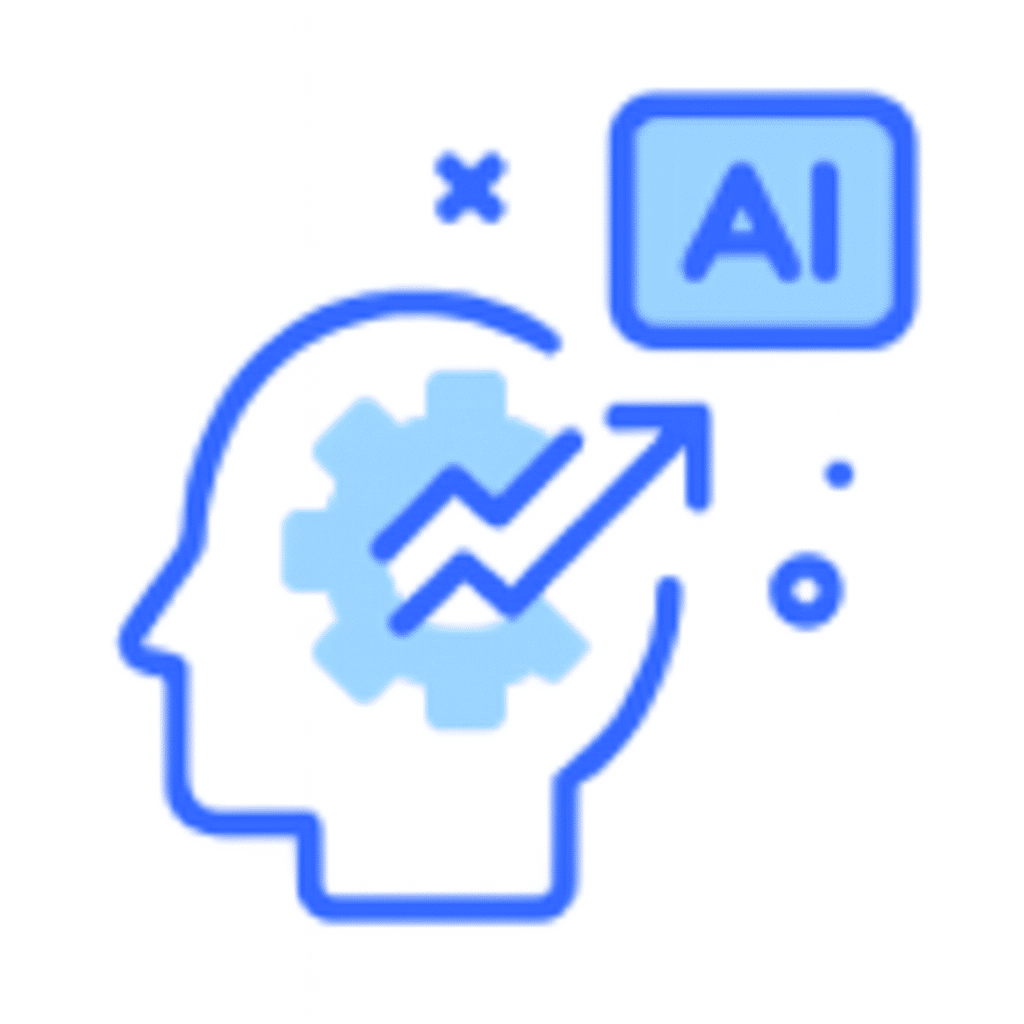Last Updated on November 24, 2025
Every modern organization thinks it’s interoperable—until the data says otherwise.
Your systems are technically connected. APIs are firing. Data is flowing. But when you zoom in on the details you realize that customer records don’t line up, product hierarchies diverge, and your analytics team spends more time reconciling inconsistencies than delivering insights.
This is often perceived as a data integration issue. But it is actually a data interoperability challenge—and it’s quietly throttling your ability to scale, automate, and respond in real time.
The push toward interoperability has intensified. More systems and more stakeholders have increased the demand for unified insights. But what’s often overlooked is the messy middle: how data from disparate systems actually gets aligned, interpreted, and trusted across platforms.
The hard truth is that if your organization isn’t actively tackling interoperability at the semantic and record-matching levels, then your decisions are being made on fragmented, duplicated, or incomplete data. Achieving interoperability ensures effective data exchange and integration, which then enable seamless information flow and data-driven decisions.
The Push for Data Interoperability: What’s Driving It?
If you’re in data or IT today, you’re likely feeling the pressure to “make everything work together.” On paper, that means interoperability. In reality, it means reconciling the chaos left behind by decades of siloed digital transformation.
What’s driving this surge in urgency for achieving data interoperability?
1. Multi-System, Multi-Vendor Architectures are the Norm – Not the Exception
No single platform can do it all. Enterprises today rely on dozens—sometimes hundreds —of systems across CRM, ERP, MDM, martech, analytics, and more. Each system speaks its own data dialect. As a result, aligning records across platforms becomes a recurring operational burden.
2. Customer Expectations Have Shifted from Accurate to Instant
Interoperability isn’t just a backend concern. When a customer updates their address in one system, they expect it to reflect everywhere. When it doesn’t, it’s not seen as “just a sync issue”—it becomes a data trust issue. And customers rarely give second chances.
3. AI and Automation Depend on Cross-System Context
The promise of AI-powered decisioning, predictive analytics, and autonomous workflows hinges on one thing: clean, unified, high-context data. That context only exists when records are matched, deduplicated, and reconciled across systems. Without that, your AI is operating with blind spots.
4. Compliance and Governance Mandates Are Tightening
Regulations like GDPR, HIPAA, and emerging U.S. data privacy and security laws require consistent recordkeeping and auditability across systems. Poor interoperability increases your risk exposure (especially when dealing with sensitive data) and reduces your ability to respond confidently in audits or data subject requests.
What Data Interoperability Really Means in Practice?
Now that we have discussed why interoperability is so critical, it’s time to get real about what interoperable data actually means.
Interoperability refers to the ability of various information systems and devices to exchange and utilize their data assets efficiently. It isn’t just about connecting systems through APIs or using industry-standard data formats. That’s the surface-level fix. True interoperability is about semantic alignment – ensuring that data across different platforms not only flows but also means the same thing in each system.
Structural vs. Semantic Interoperability
Structural interoperability ensures efficient and secure exchange, whereas semantic interoperability ensures data is interpreted consistently. By enhancing semantic interoperability, an organization’s ability to access and utilize data from different systems effectively is significantly improved. Without this layer of meaning and context, integration is like handing someone a puzzle with pieces from multiple sets: they might fit technically, but they won’t form a coherent picture.
Examples of Failed Data Interoperability Across Systems
Let’s take a look at the most common example: customer data. A typical enterprise relies on multiple systems—CRM, marketing, billing, support—to manage customer relationships. But when a record in one system is out of sync with others, it’s not just a sync error. It creates duplicate, inconsistent, and incomplete data, which disrupt business processes and ultimately impedes analytics, decision-making, operational efficiency, and customer experience.
Integration ≠ Interoperability: Where Most Teams Get Stuck
On paper, your tech stack may look connected. CRM, ERP, marketing automation, and data warehouse are all integrated through APIs, ETL tools, or cloud-native connectors. There are no apparent data silos. Dashboards light up, reports run, and teams feel like data is “working.” But step beyond the surface, and cracks quickly appear.
That’s because integration solves for connectivity, not consistency.
Application programming interfaces or APIs can move data. Pipelines can schedule syncs. But neither guarantees that the information being exchanged is aligned, deduplicated, or even mutually intelligible across systems. The most common result of it is systems that talk to each other – but don’t understand each other.
Where the Failure Happens
Most teams assume that if data is flowing, it’s usable. But here’s what might actually be happening behind the scene:
- Your billing system lists “Jane Smith” in New York.
- Your CRM shows “J. Smith” with no state listed.
- Your marketing platform sees both as separate leads.
- Your analytics layer can’t reconcile them—so you miss the full picture.
These are not API errors. They’re semantic mismatches and unresolved duplicates. And they happen after integration – in the messy middle where matching, merging, and interpretation should occur to create truly interoperable systems.
The Cost of Shallow Integration
When integration is treated as the final step rather than the first layer, teams:
- Spend months cleaning data manually before every analysis or migration.
- Lose trust in dashboards because numbers never quite reconcile.
- Duplicate outreach, billing, and reporting, which drives up both cost and confusion.
And when AI or automation enters the picture, these inconsistencies only compound – garbage in, garbage out.
Why It’s a Pattern, Not an Exception
This isn’t just an edge case or operational oversight. It’s systemic. Most platforms weren’t built with true interoperability in mind. They were built to solve specific problems in silos. As organizations grow and stack these tools together, they inherit fragmented representations of the same entities: customers, products, locations, transactions.
Unless you address how those entities are reconciled and matched, interoperability will remain an illusion.
The Hidden Bottleneck: Matching Records Across Systems
Most interoperability efforts stall not because systems can’t talk to each other, but because no one’s quite sure who or what they’re talking about.
In theory, data moves smoothly between platforms. But, in practice, the same person, product, or transaction may be represented multiple times, in slightly different ways, across multiple systems. Connecting the pipes is easy. Aligning the records inside them is where everything breaks down.
Why Matching Is the Real Interop Problem
Data matching is the unglamorous, underappreciated work that determines whether your integrated systems produce coherent, trustworthy insights—or a mess of fragmented data points.
Most teams lean on simplistic linking mechanisms:
- IDs that don’t persist across systems
- Manually mapped fields in integration tools
- Exact matches on name or email fields that fall apart in the real world
But what happens when a customer record appears in three systems as:
- “Chris M. Johnson,”
- “Christopher Johnson,”
- and “C. Johnson”
—all with slightly different addresses, contact information, or transaction histories?
If you don’t have a reliable way to reconcile those variants into a single entity, your systems aren’t interoperable. They’re just synced noise.
Real-World Consequences
In Healthcare
A healthcare organization integrating patient data from multiple EHRs without strong matching logic may fail to identify that “Jon A. Smith” and “John Smith Jr.” are the same person. This can ruin health data by leading to duplicate treatment plans and raise compliance risks and patient safety issues.
Interoperability in healthcare data isn’t about just data sharing between different systems or software applications. It also involves ensuring that patient records can be easily understood and used across different settings. It gives healthcare providers better data access and enable healthcare systems to process data from multiple sources more efficiently to improve patient outcomes.
In Retail
Without an effective data interoperability framework, a retailer syncing customer information across point-of-sale, loyalty apps, and eCommerce platforms may misidentify frequent buyers as new customers, thereby, skewing campaign effectiveness, inventory forecasting, and personalization logic.
The Problem Scales with Growth
The more systems you connect, the more identities, hierarchies, and records you need to align. Manual rules won’t keep up. Rigid keys will break. This is why advanced matching methods – like probabilistic, fuzzy, and AI-assisted matching – have become essential to ensure data accuracy. They allow data teams to go beyond exact matches and interpret data the way humans would, i.e., contextually.
Without this layer, integration efforts stall at the edge of usability. You have the data, but not the intelligence to align that data correctly to enable interoperability in true sense.
Common Data Interoperability Myths and Missteps
Many organizations overestimate their level of interoperability—until the consequences show up in the form of duplicated records, broken processes, or unreliable reporting. Here are a few of the most common misconceptions that quietly undermine cross-system alignment.
1. “We have an API, so we’re interoperable.”
Having an API means systems can exchange data—not that they understand it.
As discussed earlier, APIs are a transport mechanism between disparate data sources, not semantic translators. They don’t handle inconsistent naming conventions, duplicated records, or subtle field-level misalignments. That’s the difference between data in motion and data in context.
2. “Our data is clean – so we can integrate easily.”
Clean, standardized data in one system doesn’t mean consistent across systems.
A well-governed CRM might have pristine contact records, but once you pull in data from ERP, marketing automation, and customer support, the real test begins. Cleanliness isn’t the same as coherence. Interoperability demands both.
3. “We don’t need matching if we centralize everything.”
Centralization doesn’t solve fragmentation.
Even in a data lake or cloud warehouse, the same entity can appear in multiple forms. Without matching logic, you’re simply relocating the inconsistency, not resolving it. Centralized chaos is still chaos.
These myths persist because integration projects often succeed at the technical level, but fail at the operational one. True interoperability starts with understanding these gaps and building systems that can close them intelligently.
How Forward-Thinking Data Teams Are Rethinking Interoperability?
While many teams are still chasing interoperability through retroactive integrations and cosmetic dashboarding, the more advanced ones prioritize interoperability. They have shifted their focus to a deeper foundation: data alignment at the point of origin.
They start with matching, not mapping
Forward-thinking teams don’t wait to “clean it up later.” They start by profiling their datasets, understanding the structure and quality of their records, and using data matching as a precondition to integration – not as a patch afterward. That shift – starting with alignment instead of reconciliation – means their systems speak the same data language from day one.
They invest in profiling to anticipate misalignment
Rather than assuming that “clean” data means compatible data, these teams run profiling jobs to surface duplications patterns, outlier formats, missing fields, and inconsistent naming conventions across systems. They know interoperability is rarely a technical hurdle – and mostly a semantic one.
They build with scalability, not just integration, in mind
A quick integration may work for one use case, but smart teams architect data operations that scale across lines of business, regions, and systems. That means treating record resolution, survivorship logic, and source confidence as design inputs, not afterthoughts.
Scalable interoperability solutions are crucial for enabling organizations to manage data effectively and support business growth.
They treat interoperability as ongoing, not one-and-done
Interoperability isn’t a milestone—it’s a capability. Datasets change, systems and data standards evolve, and stakeholders multiply. The best teams bake interoperability into their data governance practices: they conduct routine matching runs, automate rule audits, and maintain visibility into identity resolution over time.
Smart teams don’t just move or consolidate data. They also ensure to make it usable. And that makes all the difference when speed, scale, and precision matter.
Key Questions Data Leaders Should Be Asking Right Now
As the complexity of systems grows, so does the need for a clear-eyed assessment of where gaps in interoperability may be impacting your business outcomes. If you’re serious about improving how your data flows, here are a few key questions to ask:
1. “Where are our interoperability gaps hurting outcomes?”
Are you seeing delays in decision-making, inconsistent customer experiences, or friction in cross-functional teams? Identify where misaligned data is causing real-world inefficiencies and missed opportunities.
2. “How confident are we in the accuracy of cross-system matches?”
Is your data ‘clean’ but still mismatched across systems? Confidence in your record matching and semantic alignment is crucial. Without it, data quality becomes a risk, not an asset.
3. “Do we have a shared understanding of ‘customer,’ ‘transaction,’ or ‘product’ across systems?
Are departments working from the same playbook? Misalignments in how core business entities are defined across systems can lead to confusion, duplicated efforts, and flawed insights.
Why Interoperability Isn’t an Integration Problem – It’s a Data Trust Problem
Interoperability is not simply a technical challenge – and it’s certainly not solved by simply wiring systems together with APIs. At its core, it’s a matter of data quality and trust. The question isn’t just about whether your systems can communicate; it’s about whether you can rely on the data being exchanged to be accurate, complete, and aligned across platforms. Without data trust, even the most well-integrated systems falter. The lack of trust in data erodes the integrity of decision-making. And when decision-making breaks down, your business does too.
Building data trust starts with a shift in mindset. It requires treating data as a living, evolving asset that must be aligned, verified, and continuously monitored for quality. It’s not a one-time project but a culture change that demands a commitment to matching, profiling, and validating data in real-time.
Moving forward, ensuring that your systems can communicate reliably and accurately will require a deeper investment in data matching solutions that go beyond surface-level integration and create true interoperability.
Ready to see how an advanced data matching solution – like DataMatch Enterprise (DME) – can solve your interoperability challenges?
Contact us today to learn how DME can help you build trust in your data from the ground up.





































